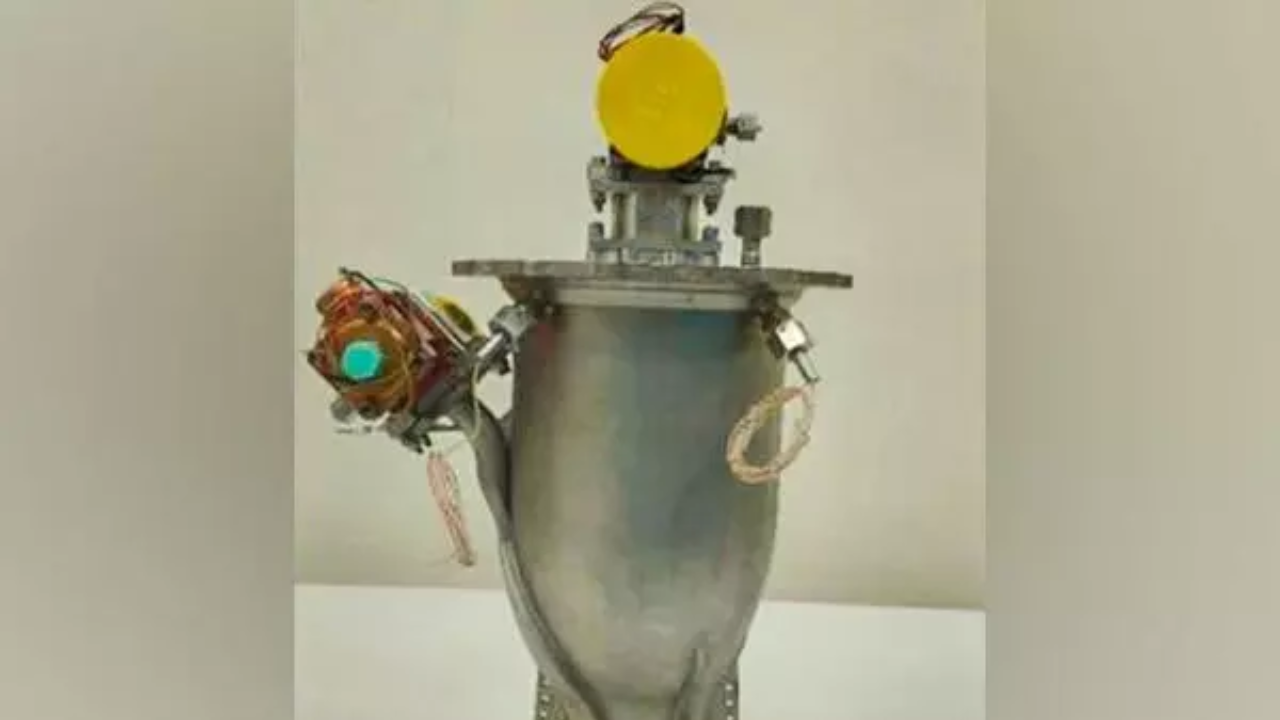BENGALURU: Isro has added another feather to its cap with the successful hot testing of a liquid rocket engine manufactured using additive manufacturing – or 3D printing – technology on May 9, the space agency said Friday.
The engine, designated for use in the PS4, is used in the upper stage of Isro’s workhorse rocket, the Polar Satellite Launch Vehicle.
Isro redesigned the conventionally manufactured PS4 engine to make it compatible with additive manufacturing techniques. It said this innovative approach, known as Design for Additive Manufacturing, has yielded remarkable advantages.
“The Laser Powder Bed Fusion technique employed in the manufacturing process reduced the number of engine components from 14 to a single piece, eliminating 19 weld joints. This streamlined design not only significantly reduced raw material usage per engine from 565kg to a mere 13.7kg of metal powder but also cut overall production time by 60%,” Isro said.
The PS4 engine, which uses a bipropellant combination of nitrogen tetroxide as the oxidizer and monomethyl hydrazine as the fuel, was developed by Isro’s Liquid Propulsion Systems Centre. The manufacturing of the additively manufactured engine was carried out by the Indian industry partner, Wipro 3D, while the hot testing was conducted at Isro’s Propulsion Complex in Mahendragiri.
“Prior to the successful 665-second hot test, Isro conducted a comprehensive development programme that included detailed flow and thermal modelling, structural simulations, cold flow characterization of the proto hardware, and four successful developmental hot tests of the integrated engine for a cumulative duration of 74 seconds. These rigorous tests validated the engine’s performance parameters,” Isro said. The successful hot-testing of the 3D-printed PS4 helps leverage additive manufacturing technology for rocket engines in the future, said Isro. “This paves the way for the induction of the additively manufactured PS4 engine into the regular PSLV programme, ushering in a new era of advanced manufacturing techniques for India’s space endeavours,” it added.
The engine, designated for use in the PS4, is used in the upper stage of Isro’s workhorse rocket, the Polar Satellite Launch Vehicle.
Isro redesigned the conventionally manufactured PS4 engine to make it compatible with additive manufacturing techniques. It said this innovative approach, known as Design for Additive Manufacturing, has yielded remarkable advantages.
“The Laser Powder Bed Fusion technique employed in the manufacturing process reduced the number of engine components from 14 to a single piece, eliminating 19 weld joints. This streamlined design not only significantly reduced raw material usage per engine from 565kg to a mere 13.7kg of metal powder but also cut overall production time by 60%,” Isro said.
The PS4 engine, which uses a bipropellant combination of nitrogen tetroxide as the oxidizer and monomethyl hydrazine as the fuel, was developed by Isro’s Liquid Propulsion Systems Centre. The manufacturing of the additively manufactured engine was carried out by the Indian industry partner, Wipro 3D, while the hot testing was conducted at Isro’s Propulsion Complex in Mahendragiri.
“Prior to the successful 665-second hot test, Isro conducted a comprehensive development programme that included detailed flow and thermal modelling, structural simulations, cold flow characterization of the proto hardware, and four successful developmental hot tests of the integrated engine for a cumulative duration of 74 seconds. These rigorous tests validated the engine’s performance parameters,” Isro said. The successful hot-testing of the 3D-printed PS4 helps leverage additive manufacturing technology for rocket engines in the future, said Isro. “This paves the way for the induction of the additively manufactured PS4 engine into the regular PSLV programme, ushering in a new era of advanced manufacturing techniques for India’s space endeavours,” it added.
Credit: Source link


